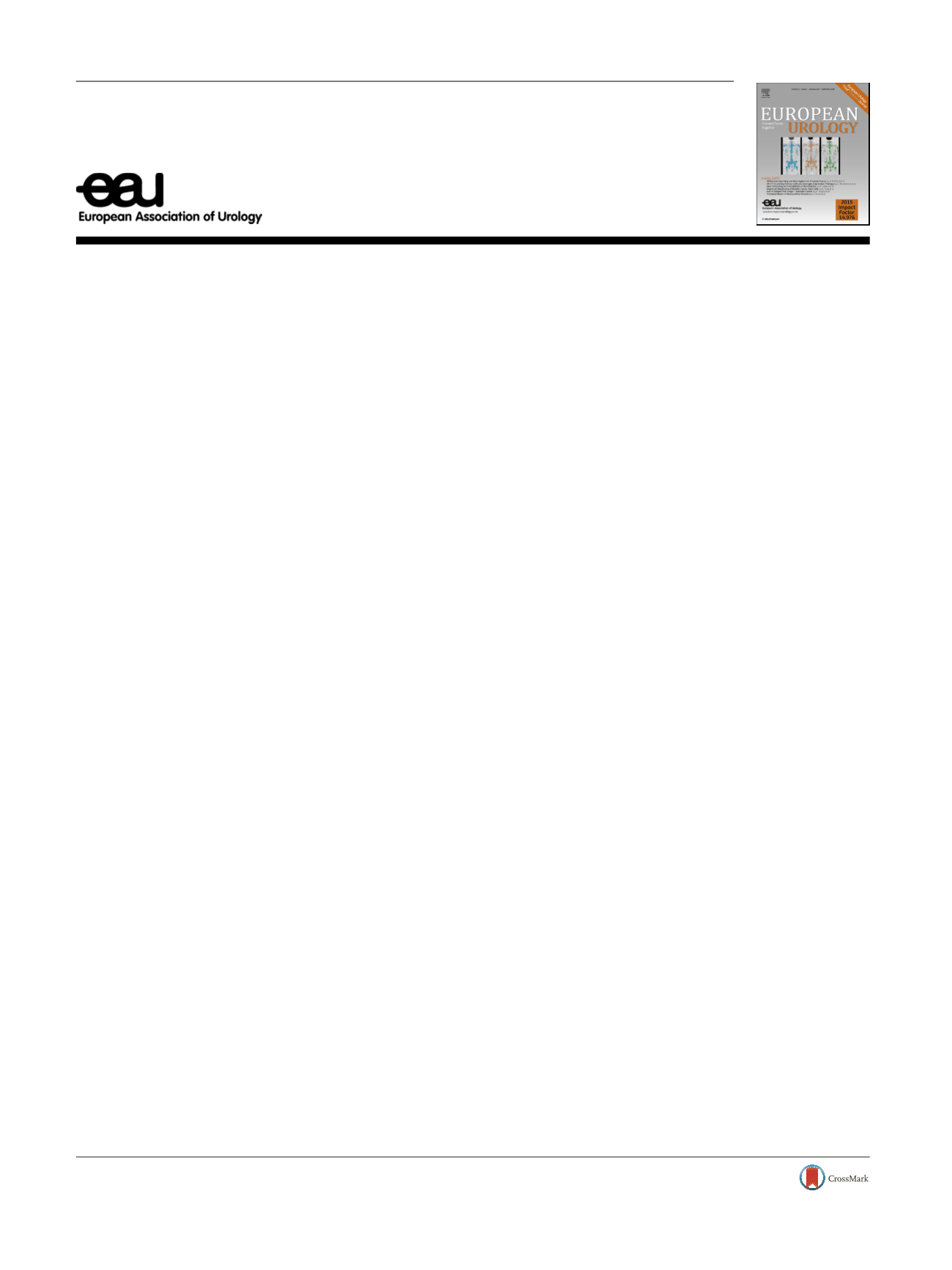

Platinum Priority – Editorial
Referring to the article published on pp. 962–971 of this issue
Subset Analyses from CheckMate 025: A Challenge to Current
Clinical Dogma?
Sumanta K. Pal
a , * ,Manuel C. Maia
a ,Nazli Dizman
a ,Neeraj Agarwal
ba
Department of Medical Oncology & Experimental Therapeutics, City of Hope Comprehensive Cancer Center, Duarte, CA, USA;
b
Department of Internal
Medicine, Division of Medical Oncology, Huntsman Cancer Institute, University of Utah, Salt Lake City, UT, USA
Arguably the most contentious debate in metastatic renal
cell carcinoma (mRCC) 5 yr ago was whether axitinib or
everolimus represented optimal second-line therapy. In the
absence of any randomized trials comparing the two
directly, investigators were left to juxtapose efficacy and
toxicity across two independent phase 3 trials
[1,2]. Subset
analyses from each trial were used to invoke comparisons of
progression-free survival (PFS) and response rate in VEGF-
tyrosine kinase inhibitor (TKI) pretreated patients. Despite
differences in eligibility, many attempts were made to infer
from the separate phase 3 data sets which drug has the
superior safety profile
[3,4].
Fast forward to 2017. For the moment, the nature of first-
line therapy remains unchanged. Sunitinib and pazopanib
remain the agents most commonly used in this setting;
although there is no consensus as to which is superior,
comparative data do exist to guide the patient and clinician
in decision-making
[5] .However, second-line therapy has
evolved entirely with the reporting of two phase 3 and one
phase 2 clinical trial. CheckMate 025 compares the PD-1
inhibitor nivolumab to everolimus in patients with one to
three prior lines of treatment
[6] .In this issue of
European
Urology
, subset analyses from this study are described.
METEOR assesses the TKI cabozantinib, which has affinity
not only for VEGF but also for MET and AXL, two putative
oncogenic drivers
[7] .Finally, a randomized phase 2 study
compares the multikinase inhibitor lenvatinib to ever-
olimus and to the combination of drugs.
At recent meetings it has been evident that clinicians
have aligned primarily with either cabozantinib or nivolu-
mab in the second-line setting. Despite compelling PFS data
for lenvatinib, the relatively small phase 2 experience that
led to its approval leaves most oncologists desiring further
data. A dogma has emerged among many practicing
clinicians around the use of nivolumab and cabozantinib
as second-line therapy. In general, patients who have
rapidly progressive disease who need a ‘‘rapid response’’ are
offered cabozantinib, while patients with more indolent
disease are offered nivolumab. Similarly, cabozantinib has
been reserved for the more robust patient, while nivolumab
is offered to older, frailer patients.
The subset analyses from Checkmate 025 presented by
Escudier et al
[7]offer an opportunity to examine the
appropriateness of this framework. Overall, the study met its
primary endpoint, demonstrating an improvement in overall
survival (OS) relative to everolimus. The response rate was
higher with nivolumab, although no difference in PFS was
observed. Curiously, according to OS in subsets divided by
Motzer risk group, it is patients with poor-risk disease who
benefit the most. By contrast, Kaplan-Meier curves outlining
OS in patients with good- and intermediate-risk disease
show no significant difference. Forest plots in this report
show similar benefit in subgroups divided above and below
age 65 yr, but the original publication shows a lesser degree
of benefit in OS among patients aged 75 yr, with a trend
that appears to favor everolimus
[6].
With these rather surprising results in mind, one might
ask how cabozantinib performs in the same population.
Subset analyses from the METEOR trial show an opposite
trend among risk groups; specifically, patients with good-
and intermediate-risk disease appear to derive the greatest
PFS benefit from cabozantinib relative to everolimus, while
E U R O P E A N U R O L O G Y 7 2 ( 2 0 1 7 ) 9 7 2 – 9 7 3available at
www.scienced irect.comjournal homepage:
www.europeanurology.comDOI of original article:
http://dx.doi.org/10.1016/j.eururo.2017.02.010.
* Corresponding author. Department of Medical Oncology, City of Hope Comprehensive Cancer Center, 1500 East Duarte Road, Duarte, CA 91010, USA.
Tel. +1 626 2564673; Fax: +1 626 3018233.
E-mail address:
spal@coh.org(S.K. Pal).
http://dx.doi.org/10.1016/j.eururo.2017.03.0060302-2838/
#
2017 Published by Elsevier B.V. on behalf of European Association of Urology.
















